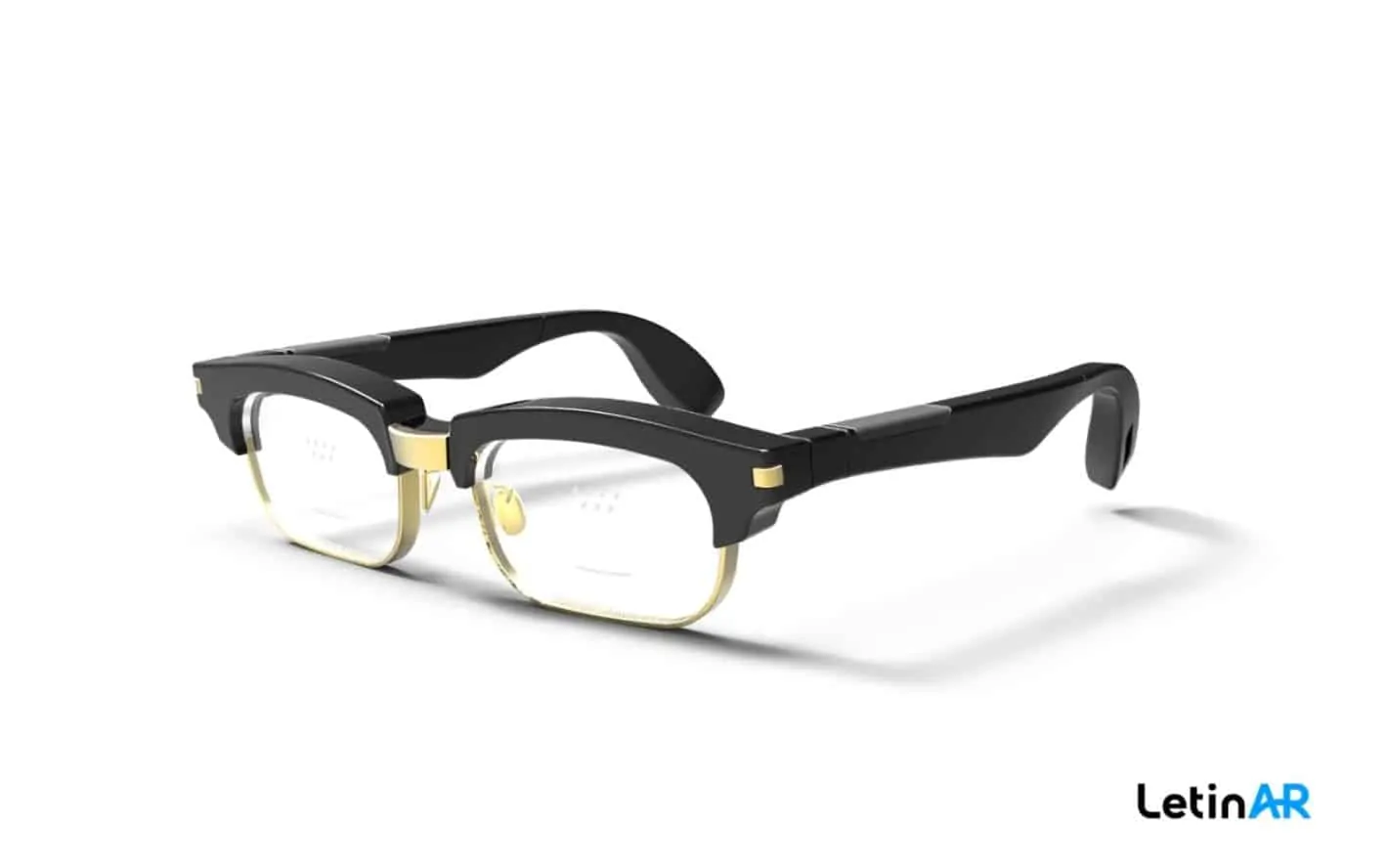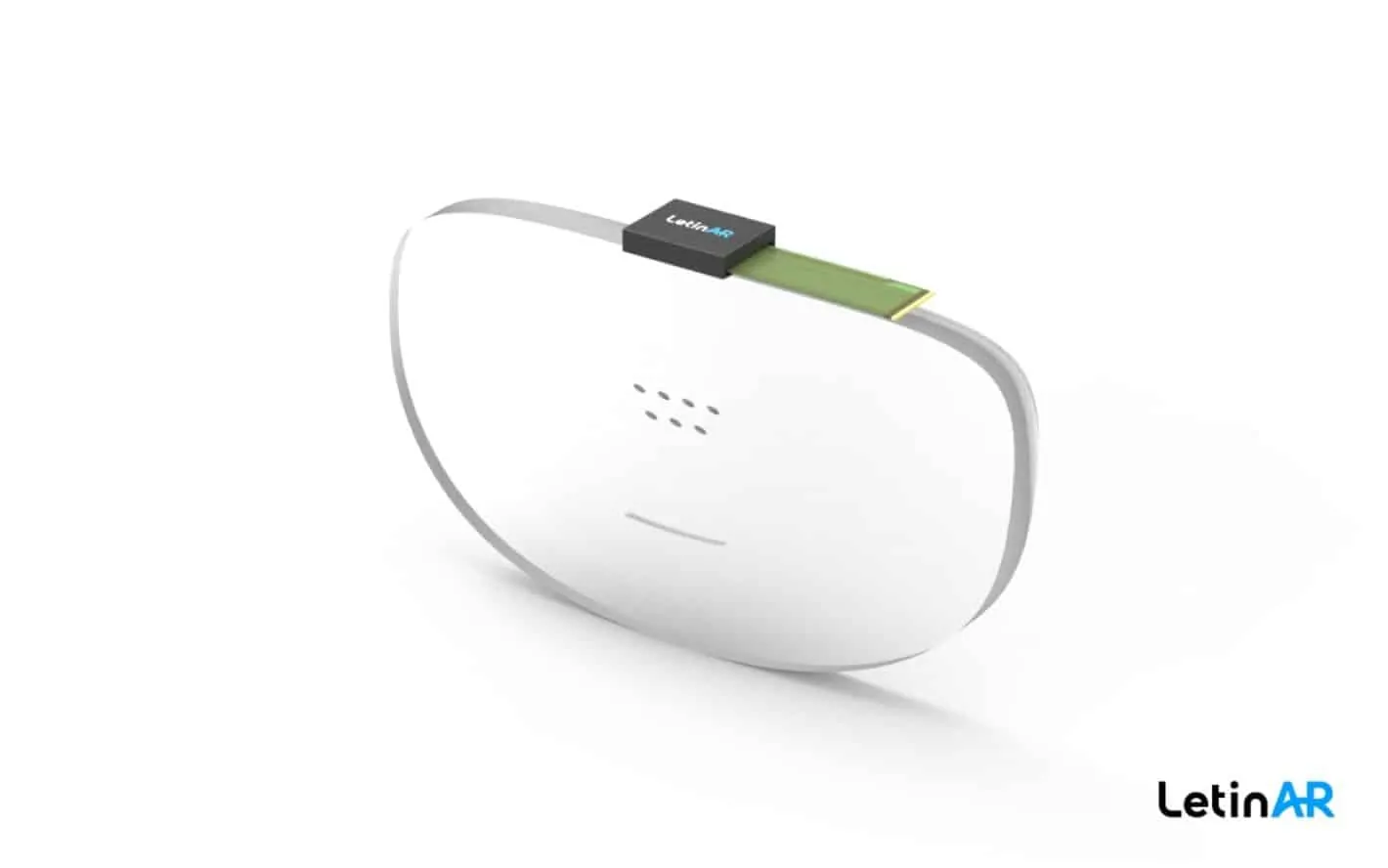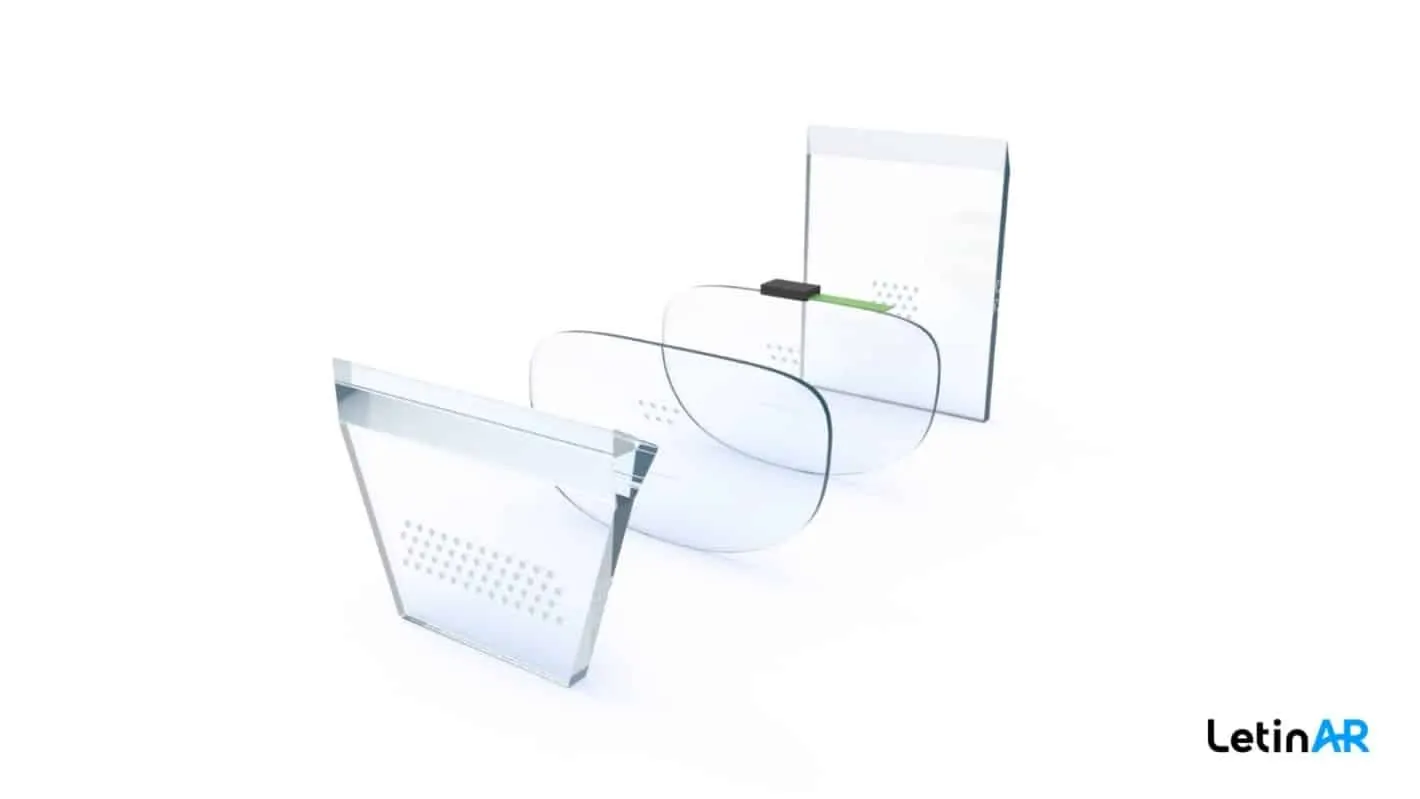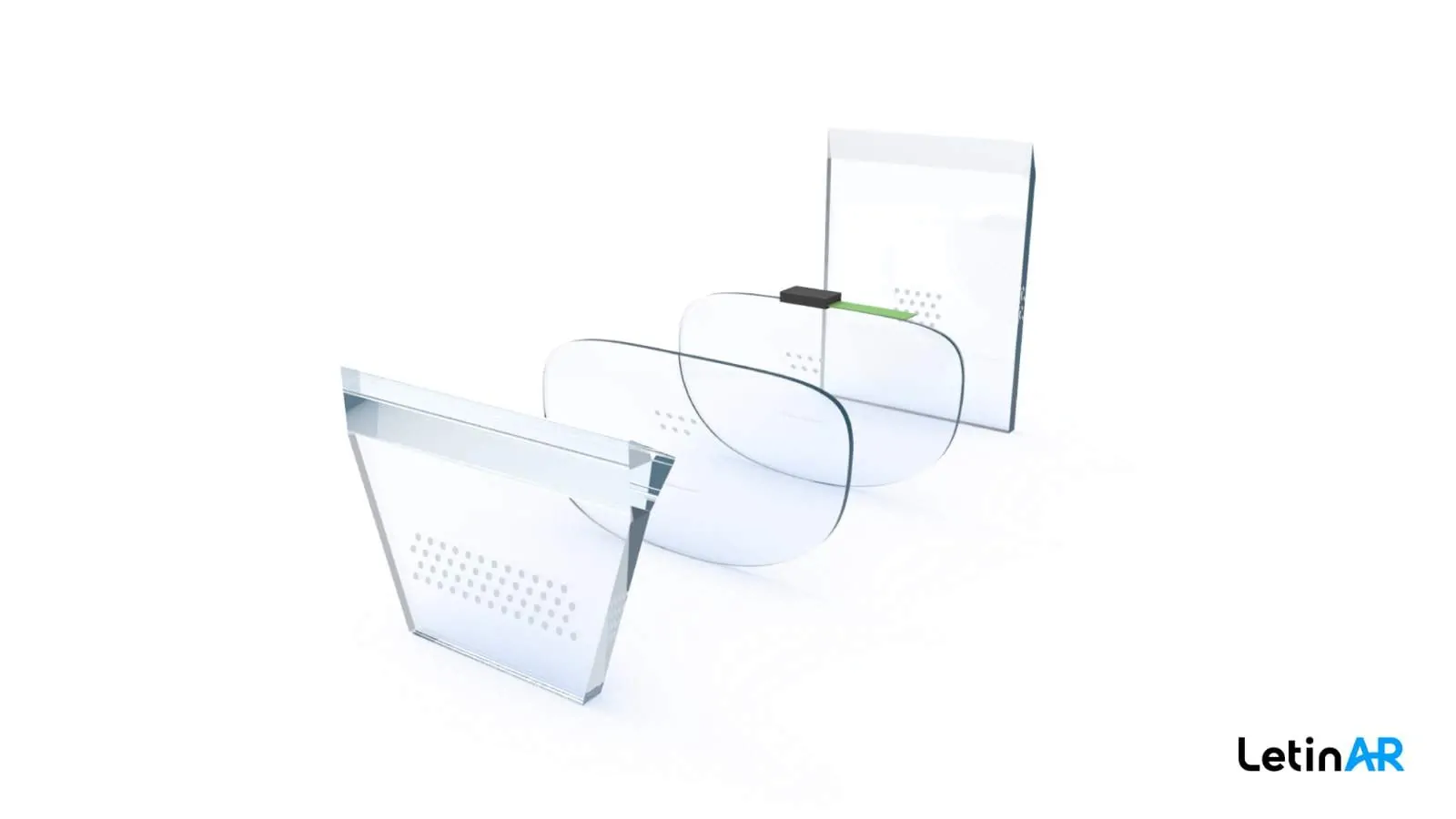Optical solutions startup LetinAR has announced that it will be headed to Barcelona for MWC 2019 to show off a new prototype for smart glasses the company has dubbed “Pin Mirror (PinMR).” The new smart glasses allow for a diagonal field of view of 120-degrees, covering most of a wearer’s natural field of vision. They also represent the world’s first 8K AR wearable, LetinAR says, with each eye privy to its own 4K display.
The technology behind the new LetinAR PinMR smart glasses will be shown in collaboration with the German electronics institute Fraunhofer FEP. Central to the design is a new ultra-low-power OLED microdisplay meant for use in AR eyewear. The lens offers much better color accuracy over diffraction-based or refraction-based smart glasses while also enabling the higher resolution for a less disconcerting experience.
Visitors to the joint boot at CS80 in the Wearable Pavillion from February 25 through February 28 will be able to explore three different associated zones. Those will focus on what LetinAR calls the ‘World’s first 8K AR device’, ‘truly wearable smartglasses’, and ‘the most advanced PinMR AR optical solution’. Each will center around a different aspect of the newest prototypes being built around the technology, showcasing where the startup is striving to lead the industry.
Technology to address common problems
AR and VR share similar limitations and have posed problems for a variety of companies for some time now, causing several companies to make promises and eventually fall flat. The most prominent example of that may be Magic Leap, which promised a revolutionary AR experience intended to finally push the technology beyond the use in Enterprise environments such as with Google Glass and Microsoft’s Holo Lens.
Magic Leap ultimately failed to deliver on its promise across nearly every measurable metric, falling well short of its performance and pricing goals. That led to an end-product that wasn’t well suited for either commercial or home use.
Field of view and visual resolution are among the primary concerns because of problems the technology can cause in terms of immersion. Without a high level of immersion, users of AR or VR most commonly experience dizziness or motion sickness that ruins the experience entirely.
Both LetinAR and Fraunhofer FEP believe the new technology can address the largest problems with AR experiences. Namely, the technology could lead to extremely efficient and lightweight designs that enable AR wearables to feature the same “always-on” capability as smartphones.
A burgeoning industry nonetheless
Despite persistent problems with the technology, various companies have persisted to experiment with the prospect of implementing AR into wearables and entertainment experiences. For example, a recent Samsung patent filing is seeking to enable AR to take some of the HUD information off of televisions. Using a glasses-like wearable, those UI elements would be placed above the display and users would interact with that in order to maintain a more cinematic experience for users.
The continued pursuit of advances for the technology, according to research analysts at IDC, will eventually lead to a boom for the industry. The firm expects AR and VR growth to take shipments of the technology from 12.4 million units to 68.9 million units from 2018 through 2022. That leaves plenty of room for LetinAR’s new PinMR AR optical solution to assist in driving the industry forward.







